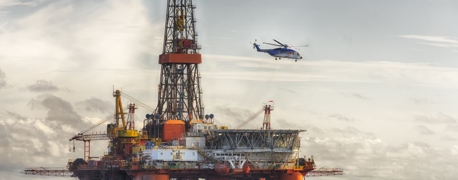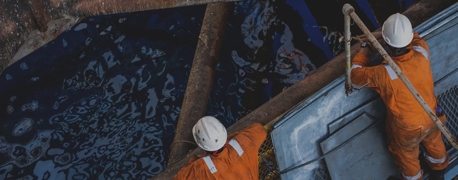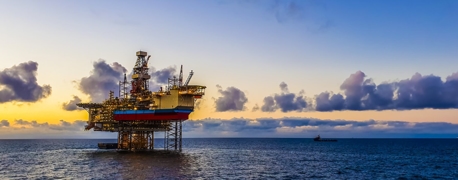A Parent’s Guide to Houseboat & Pontoon Safety

Whether it’s out on a houseboat or pontoon, most days on the water unfold smoothly and safely, filled with the kind of memories that define a summer. With the right awareness and preparation, you can make sure that every day on the water stays this way. By knowing a few essential facts and building simple safety habits, you can keep those days out in the sun, jumping into the water, and relaxing on your boat what they should be: carefree.
The Big Picture of Houseboat & Pontoon Accidents
According to the U.S. Coast Guard, there were 3,844 recreational boating accidents in 2023, resulting in 564 deaths and 2,126 injuries. That works out to a fatality rate of 4.9 deaths per 100,000 registered vessels. In 2024, the rate improved slightly to 4.8 deaths per 100,000 registered vessels.
Now, before those numbers unduly alarm you, just know that these statistics cover all types of boats, from kayaks to yachts. Houseboats and pontoons specifically account for a much smaller portion of these incidents.
That said, in recreational boating accidents where the vessel type was reported, pontoons accounted for 7% to 10% of recreational boating deaths, specifically 41 to 64 deaths each year, per U.S. Coast Guard data between 2021 and 2024. In that same time period, there were no more than 4 houseboat deaths reported, and in 2024 there were zero. As for injuries in those years, there were 8 to 16 injuries reported on houseboats, and 139 to 181 injuries on pontoons.
The Dangers to Watch Out For: A Few Specific Instances
In 2019, on Lake Shasta, California, as a family was bringing their houseboat to shore, one of them fell into the water, and the person operating the boat couldn’t stop the engine in time. The propeller injuries were severe and proved fatal. In January of 2025, three adults were found dead on Saguaro Lake, Arizona, their houseboat having turned into a carbon monoxide trap, likely from the generator inside.
In 2024 in Florida, a pontoon boat flipped over and trapped a 15-month-old beneath the water for long enough that the oxygen deprivation caused permanent brain injury. That model of pontoon is under recall because of its defective design and faulty sealing of the hull, which would cause that vessel to nosedive and flip. In 2024, this time in Virginia, that same type of pontoon boat flipped because its faulty hull took on water, and this accident killed a 9-year-old. Similarly, a pontoon boat of that recalled model crashed, nosedived, and flipped in September of 2025, killing three people on Flagstaff Lake in Maine.
Houseboat & Pontoon Safety Awareness
While you probably already knew about risks like falling overboard or drowning, as well as the importance of wearing life jackets, all facts that are worth repeating, some houseboat and pontoon hazards might surprise you. Awareness is your first line of defense, so let's walk through what you need to know.
Carbon Monoxide: The Silent Threat
Carbon monoxide is particularly dangerous because it's invisible and odorless. It can build up in enclosed cabins or near exhaust vents, especially on houseboats with generators and propulsion engines. What makes this especially treacherous is how quickly it can accumulate—in just seconds when a generator or engine is running.
CO can collect around exhaust vents outside the boat, creating a danger zone that swimmers unknowingly enter. It can also build up inside the cabin, particularly in sleeping areas. This is why working CO detectors aren't optional; they're essential life-saving equipment.
You can teach everyone in your family to recognize the signs of carbon monoxide exposure:
- Headache and dizziness
- Confusion or disorientation
- Unusual fatigue
- Nausea
- Seizures
- Loss of consciousness
If anyone experiences these symptoms on or near your houseboat, get them into fresh air immediately and seek medical attention. These symptoms can progress rapidly, and early recognition can save lives.
Other Houseboat & Pontoon Risks to Be Aware Of
While not comprehensive, here are some of the other potential risks to know about taking a houseboat or pontoon out on the water:
- Propeller Hazards: Propellers remain dangerous even when engines idle or operate in reverse. Whenever anyone is in the water, it’s time to turn the engine off.
- Navigation & Speed Limit Violations: While you can take a boating safety course to ensure that you can operate these vessels safely, others out on the water can be reckless, and such recklessness is a leading cause of houseboat and pontoon accidents.
- Slip & Fall Accidents: With wet decks, ladders, and transitions between houseboats or pontoons and the deck, this creates a wide range of slip hazards, which can lead to head trauma. Proper footwear and awareness can mitigate these risks.
- Electric Shock Drowning: Faulty wires can energize the water around a boat. This electrical field can cause paralysis, making it possible for even strong swimmers to drown. While rare, this serious risk makes it worthwhile to have a boat’s electrical system inspected by qualified technicians.
- Equipment Recalls: Manufacturers too often release products on the market that were poorly designed and are ticking time bombs, whether it’s a faulty vessel in whole or some its part, such as a malfunctioning generator. Even when recalls are issued, the news doesn’t always reach people in time, and are often issued only after tragedy has already struck.
Some accidents have more preventable factors than others, with some issues being entirely out of the hands of the families taking those vessels out on the water. From defective generators and carbon monoxide detectors to shoddily designed vessel hulls, there are many circumstances in which liability is entirely on a manufacturer or another party. But if you’re aware of the wide range of dangers, this can help you know what to look for, and what preparations are possible for you to make.
Your Action Plan: Building Safety Habits
Some of these simple habits, once established, can become as automatic as applying sunscreen.
Before You Leave the Dock
Install & Test CO Alarms
You’ll want to make absolutely certain that carbon monoxide alarms are installed on your houseboat and that they're working properly. It may be advisable to install redundant sensors for extra protection, particularly near sleeping areas and in enclosed spaces. Consider portable CO detectors as backup. Whichever system(s) you’re using, it’s important to test all alarms before every trip. This five-minute check could save lives.
Ensure Proper Professional Maintenance
This isn't an area for DIY work or budget-cutting. Professional maintenance catches problems before they become emergencies. Ask for documentation of all inspections and keep records. Whether you’re renting a houseboat or pontoon, or you own one, you want to know that qualified technicians regularly inspect the engine, any generator, and exhaust system.
Fit Everyone with Proper Life Jackets
Every person on your boat needs a U.S. Coast Guard-approved life jacket that fits properly. Children require properly sized youth or child jackets, as adult jackets will not protect smaller bodies adequately. These life jackets should be worn whenever anyone is on deck, not just stored somewhere "just in case."
Establish & Review No-Swim Zones
Everyone, adults and children alike, must understand where the no-swim zones are around your vessel, particularly near propellers and exhaust vents. Even if it feels repetitive or brings on eye rolls, it is still worthwhile to review what these zones are before anyone enters the water, every single time.
Test the Kill Switch
The engine kill switch lanyard is a critical safety device. Test it before you need it, verifying that it immediately stops the engine when disengaged. Attach it to the operator before starting the engine and ensure it stays attached during operation.
Check Weight Capacity
For pontoons especially, confirm you're not exceeding the vessel's weight capacity. Overloading compromises stability and increases the risk of capsizing. That means not only factoring passengers, but also gear, coolers, and equipment. Some poorly designed pontoons in particular are prone to instability.
While You're on the Water
Turn Off the Engine. No Exceptions.
Whenever anyone enters the water for any reason, the engine must be completely off. Not in neutral, completely off. This single rule can help protect against propeller accidents.
Designate a Water Watcher
Drowning remains the primary safety risk on any watercraft. Someone must always be designated as the "water watcher" with one job: keeping eyes on swimmers at all times. No phones, no distractions, no multitasking. If you have many swimmers over an extended period, set up shifts so the watcher stays fresh and alert.
This is crucial because drowning happens quickly and silently. People don't thrash and yell like in movies; they slip under the surface quietly. Constant supervision is the only effective prevention.
Monitor for Carbon Monoxide Symptoms
Even when docked, carbon monoxide exposure can be a risk if generators are running. Stay alert for early warning signs in yourself and others: dizziness, nausea, headaches, or unusual fatigue. If anyone experiences these symptoms, move them to fresh air immediately and seek medical evaluation.
Stay on Top of Weather Changes
Weather on the water can change rapidly. Monitor forecasts continuously, not just before departure. Many apps provide real-time weather updates and alerts. If conditions deteriorate, head for shore immediately. Don't wait to see if it will blow over. The water is no place to ride out dangerous weather.
How to Call for Help If You Run into Trouble
Knowing how to properly use marine radio communication can mean the difference between a quick rescue and a prolonged emergency. If your vessel is equipped with a VHF marine radio, understanding when and how to use standard emergency calls is crucial.
Mayday: For Immediate Life-Threatening Emergencies
Use “Mayday” if you’re facing grave and imminent danger that requires immediate help. These would be situations like a fire, sinking, medical emergency that requires evacuation, or man overboard in dangerous conditions.
Here’s how to call Mayday:
- Switch to VHF Channel 16 (the international distress frequency)
- Press the transmit button and say clearly: "Mayday, Mayday, Mayday"
- State: "This is [your boat name], [your boat name], [your boat name + boat call sign]"
- Give your position (GPS coordinates or description of location)
- State the nature of your emergency
- State the number of people on board and if any are injured
- Describe your vessel (length, color, type) and its condition
- End with "OVER"
- Release the transmit button and wait for response
Repeat if you receive no response. Do not use Mayday for non-life-threatening situations. In a non-emergency, you might need to use “Pan-Pan” instead.
Pan-Pan: For Urgent But Not Immediately Life-Threatening Situations
“Pan-Pan” (pronounced "pahn-pahn") indicates an urgent situation that requires help but that isn't immediately life-threatening. This could be situations like mechanical failure in dangerous waters, a medical issue that requires attention but not immediate evacuation, or being adrift but not in immediate danger.
How to call Pan-Pan:
- Switch to VHF Channel 16
- Say: "Pan-Pan, Pan-Pan, Pan-Pan"
- State: "This is [your boat name] [your boat name] [your boat name + boat call sign]"
- Give your position
- Describe the nature of your situation
- State what assistance you need
- Provide vessel description and number of people aboard
Repeat as needed until you get a response.
Sécurité: For Important Safety Information
Sécurité (pronounced "say-cure-it-tay") broadcasts important safety information to other vessels. These would be situations like debris in the water, hazard to navigation, severe weather warning, or a lost swimmer (when not in immediate danger). You might hear this type of communication while your radio is on. Usually speaking, this is something that ship captains and authorities will use.
Just in case that applies to you, here’s how to call Sécurité:
- Switch to VHF Channel 16
- Say: "SÉCURITÉ, SÉCURITÉ, SÉCURITÉ"
- State: "All stations, all stations, all stations"
- State: "This is [your boat name]"
- Provide the safety information
You've Got This: Confidence Through Preparation
The more you know, the more relaxed and confident you can be on the water. These safety practices might feel like a lot when you first read through them, but they quickly become second nature.
Houseboats and pontoons offer something truly special: the chance to disconnect from the daily rush, to float in beautiful places, to gather your family in a setting where the only agenda is being together. These vessels provide a unique platform for creating the kind of memories that define childhoods and strengthen family bonds.
It’s what any family deserves. As long as other boat operators on the waterway remember that, and manufacturers do their duty to provide safe vessels, then you can enjoy it all, the adventure, the joy, and the memories that come with a family boating trip.
- Categories


